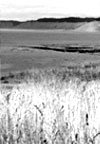| |
|
| |
 |
 |
|||
 |
|||||
 M
MResearch Support Facilities M Relevant Fields of Study M Recent Case Studies M Contact Info |
 |
General Setting and Resources: M Mount Rainier National Park encompasses 235,625 acres on the west-side of the Cascade Range, and is located about 100 kilometers (50 miles) southeast of the Seattle-Tacoma metropolitan area. The park was established in 1899 to "provide for the preservation from injury or spoliation of all timber, mineral deposits, natural curiosities, or wonders within said park, and their retention in their natural condition . . . for the benefit and enjoyment of the people. . ." (Mount Rainier National Park Act 1899). As directed by the NPS Organic Act, the Redwood Act for Expansion and its enabling legislation, the major activities conducted by Mount Rainier National Park are the protection and preservation of natural and cultural resources and the provision for use of the park by visitors. Mount Rainier National Park is approximately 97 percent wilderness and 3 percent National Historic Landmark District and receives approximately 2 million visitors per year. At 14,411 feet, Mount Rainier is the most prominent peak in the Cascade Range. It dominates the landscape of a large part of western Washington State. The mountain stands nearly three miles higher than the lowlands to the west and one and one-half miles higher than the adjacent mountains. It is an active volcano that last erupted approximately 150 years ago. The park is part of a complex ecosystem. Vegetation is diverse, reflecting the varied climatic and environmental conditions encountered across the park's 12,800-feet elevation gradient. Approximately 58 percent of the park is forested, 23 percent is subalpine parkland, and the remainder is alpine, half of which is vegetated and the other half consists of permanent snow and ice. Forest ages range from less than 100 years old on burned areas and moraines left by receding glaciers to old-growth stands 1,000 or more years. Some alpine heather communities have persisted in the park for up to 10,000 years. Species recorded in the park include more than 800 vascular plants, 162 birds, 55 mammals, 12 amphibians, 5 reptiles, and 8 native fishes. The park contains 26 named glaciers across 9 major watersheds, with 382 lakes and 470 rivers and streams and over 3,000 acres of other wetland types. (top of page) |
|||
|
|
|||||

(top of page) |
|||||
|
|
|||||
| Air Resources Biology Fire Ecology Geology Historical Studies Paleoecology (top of page) |
|
Plant Ecology Restoration Ecology Social Science Wilderness Management Wildlife Ecology |
|||
|
|
|||||
Genetics, Demography, and Movement of Olympic Marmots Olympic National Park Suzanne Cox Griffin, L. Scott Mills, Ph.D., Mark Taper, Ph.D. University of Montana (top of page) |
|||||
|
| |||||
Mount Rainier National Park Mount Rainier National Park 55210 238th Ave. East Ashford, WA 98304 (360) 569-2211 www.nps.gov/mora Inquiries and research permit applications should be directed to: Chief Natural and Cultural Resources Mount Rainier National Park 55210 238th Ave. East Ashford, WA 98304 (360) 569-2211 (top of page) |
|||||
|
|
|
|
|
|
| Research & Park Stewardship > The Parks > Mount Rainier N.P. | |